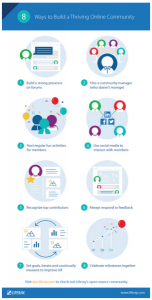by Sean Hargrave, Staff Writer, November 17, 2016
It may not be the most surprising news, given that quarterly sales of smartphones outnumber annual PC shipments, but for the record, last month was the tipping point when the majority of Web viewing was mobile rather than desktop. That’s according to data from Statcounter widely reported his morning.
So just in case you have been having trouble convincing colleagues we are in a mobile-first world, here’s the stat for you. Globally, just over 51% of Web traffic was driven by mobile device in October. Now, that might help with any laggards, but the uncomfortable truth is that in the UK, at least, we have had a mobile-first marketing landscape for quite some time. In the first half of this year, for example, mobile spend exceeded desktop for the first time.
In fact, it was at least two years ago that I was talking with Auto Trader and was surprised by the quick take-up of mobile. It was seeing around two in three visits coming through mobile devices because, as you might imagine, scouring the Web for a new car is quite often done on the sofa with a tablet or mobile before the serious hunt takes to the street.
It’s an obvious channel for trailing a blaze in mobile browsing. Common sense would also tell a curious marketer that if they look around at all the browsing they see at bus stops, in trains, elevators and cafes throughout the day among the general public, it would need everyone to spend an entire night on a PC to bring browsing back to anywhere near parity.
The question, then, is finally no longer about when we will see a mobile-first world, but what we are going to do about it. Curious marketers should take a look at their mobile presence and that of competitors and even check out players in completely unrelated markets to see how they are rising to the challenge of mobility.
You might want to give BA.com a quick glance. Its new beta site looks pretty good. It’s clearly optimised on a smartphone screen, but delve deeper and you can see it’s the bits they want you to click on that look good. If you have a query, for example, just try finding out a detail about policy or check out the FAQs. There you will see how small type is no longer always optimised for the small screen and content has to be pinched and pulled or scrolled across to read. It may be a picky point, but it shows how a lot of the mobile transformation work that brands herald they have undergone can often be little more than skin deep.
So you need to go further than accepting that we are in a mobile-first world and embrace it. Make everything you do legible on a small screen, make ordering your products and services as simple as pressing a button (as ever, check out Amazon for this). And the secret ingredient? Proximity. If you can pre-empt what a customer is likely to want to do based on where they are both geographically, and perhaps even where they are in your sales funnel, you can personalise a mobile experience that will delight.
The alternative is to leave people trying to click on tiny icons, pinching and pulling text around and getting frustrated about why you just don’t make it easier for them to be a customer. It’s a clear choice. To do nothing is choosing to frustrate.
This column was previously published in the London Blog on November 2, 2016.
MediaPost.com: Search Marketing Daily
(54)
Report Post





